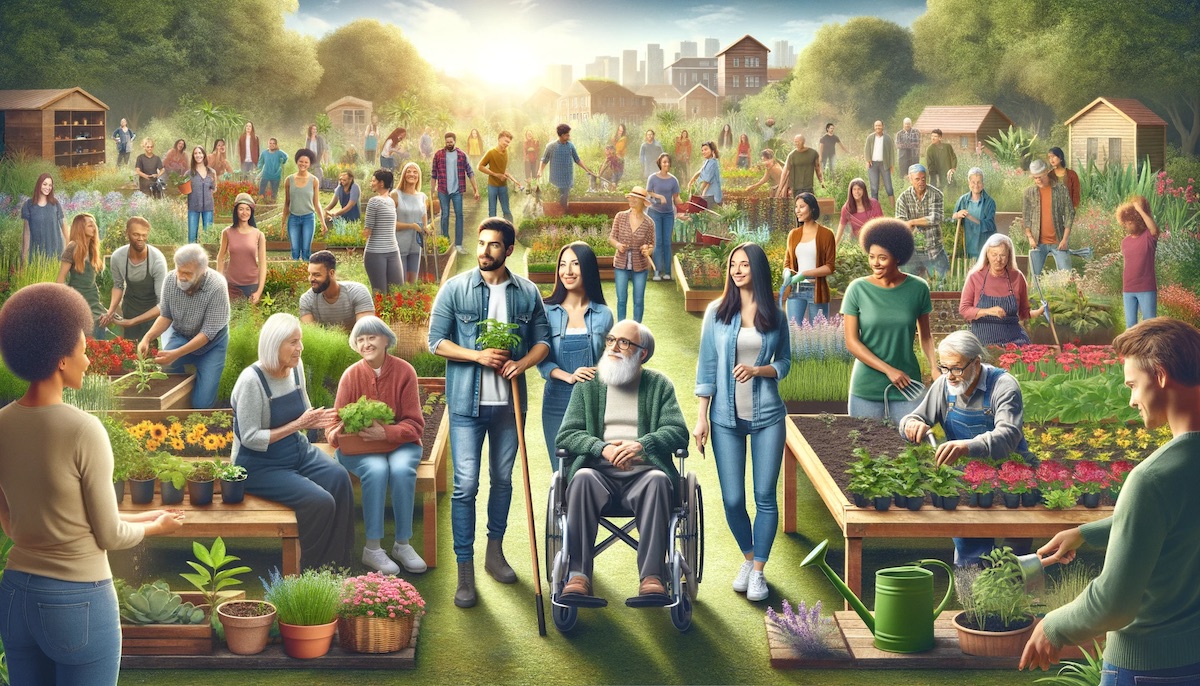Home>Health and Wellness>Building Inclusive Communities for Healthier Futures


Health and Wellness
Building Inclusive Communities for Healthier Futures
Published: January 24, 2024
Discover how fostering inclusivity can lead to healthier, more resilient communities and learn strategies for creating spaces that welcome and support everyone.
(Many of the links in this article redirect to a specific reviewed product. Your purchase of these products through affiliate links helps to generate commission for Regretless.com, at no extra cost. Learn more)
In our rapidly evolving world, the need for inclusive communities – ones that prioritize the health and well-being of all members, including women and transspectrum individuals – has never been more critical. The inclusive community model is a transformative approach, ensuring equitable health access and fostering a supportive environment for everyone, irrespective of their background. Groups like the H.O.T.D.I.S.H. Militia in Northeastern Minnesota are pioneering in this realm, blending local culture with political activism to champion reproductive health and justice.
Understanding the Essence of Inclusivity in Community Health
Inclusivity in healthcare is more than a buzzword; it’s a key to happiness, rooted in a commitment to understanding and addressing the diverse needs of all community members. This concept involves creating a healthcare ecosystem that is accessible, respectful, and responsive to the varied lifestyles, cultures, and challenges of its populace. It’s about dismantling barriers and building bridges, ensuring that services are not just available but also approachable and appropriate for everyone, thereby fostering a sense of well-being and contentment in the community.
Strategies for Fostering Inclusive Communities
1. Engage and Empower Local Voices
- Facilitate community meetings and forums to understand and address the unique health needs of diverse groups.
- Encourage active participation from all community segments, especially those traditionally marginalized or underrepresented.
2. Cultivate Cultural Competence Among Healthcare Providers
- Implement training programs that educate healthcare workers on cultural sensitivity, aiming to bridge the gap between medical practice and cultural understanding.
- Establish policies that respect and accommodate a variety of cultural and personal practices in healthcare settings.
3. Enhance Accessibility to Diverse Healthcare Services
- Develop innovative solutions like mobile health clinics to reach remote or underserved areas.
- Expand telehealth services, making healthcare accessible for those with mobility issues or those living far from medical facilities.
4. Implement Comprehensive and Inclusive Sex Education
- Design and deliver education programs that cover a wide range of topics including sexual health, consent, reproductive rights, and LGBTQ+ inclusivity.
- Ensure these educational programs are adaptive, culturally sensitive, and inclusive of all gender identities and sexual orientations.
5. Support and Integrate Mental Health Initiatives
- Seamlessly integrate mental health services into primary healthcare systems, making mental health care a standard part of overall health care.
- Initiate community-based mental health awareness campaigns to destigmatize mental health issues and encourage open discussions.
6. Promote Political Advocacy for Health Rights
- Empower and encourage community members to actively participate in advocating for inclusive health policies.
- Support and collaborate with local organizations like H.O.T.D.I.S.H. Militia in their efforts to influence health-related policies and practices.
7. Foster Collaborations Across Different Sectors
- Create partnerships with local businesses, educational institutions, and non-governmental organizations to support and amplify health initiatives.
- Build interdisciplinary teams comprising healthcare professionals, educators, activists, and community leaders to address complex health issues collectively.
The Impact of Inclusivity on Community Health
The implementation of these strategies can lead to significant positive outcomes in community health. Inclusive communities experience:
- Reduced Health Disparities: By addressing the specific needs of all community members, including the most vulnerable, inclusive communities work towards reducing health disparities.
- Improved Access to Healthcare: Enhanced accessibility and cultural competence in healthcare services lead to better health outcomes for marginalized groups.
- Increased Health Literacy: Comprehensive education initiatives raise awareness and understanding of health issues, leading to more informed and healthier communities.
- Strengthened Community Bonds: When all members feel seen, heard, and cared for, it fosters a sense of belonging and strengthens community ties.
The Role of Technology in Supporting Inclusive Healthcare
In the digital age, technology plays a crucial role in fostering inclusivity in healthcare. Telemedicine, health apps, and online platforms offer innovative ways to deliver healthcare services, education, and support, making them more accessible to diverse populations.
Challenges and Opportunities
While the journey towards building inclusive communities is filled with challenges, including funding constraints, systemic barriers, and resistance to change, the opportunities and benefits are immense. Every step towards inclusivity is a step towards a healthier, more equitable society.
Conclusion
In conclusion, building inclusive communities for a healthier future is not just a noble aspiration but an essential strategy to overcome darkness and embrace life in today’s diverse world. Organizations like the H.O.T.D.I.S.H. Militia are leading the way, showing how combining local culture, political theory, and grassroots activism can make a real difference in community health. As we move forward, we all must contribute to this mission, embracing inclusivity as the cornerstone of community health and well-being.













